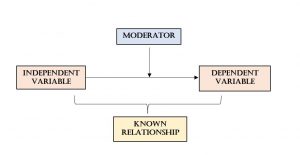Aim 2
Goal: To determine for whom and under what conditions PA is effective.
We hypothesize that the level of PA effect on student outcomes varies among different groups of students. We want to conduct analyses to understand for whom and under what conditions the program is most effective.
By determining which variables act as moderators for program outcomes, this investigation will discover information to better understand how the program impacts different groups of students.
According to Baron and Kenney (1986), “In general terms, a moderator is a qualitative (e.g., sex, race, class) or quantitative (e.g., level of reward) variable that affects the direction and/or strength of the relation between an independent or predictor variable and a dependent or criterion variable. Specifically within a correlational analysis framework, a moderator is a third variable that affects the zero-order correlation between two other variables” (p. 1174).

The sub-aims are:
Aim 2a: To test the relative effectiveness of the program for various subpopulations of students.
The hypothesis is that PA will be equally effective longitudinally for subpopulations based on invariant indicators (e.g., gender, race/ethnicity, family structure) where SECD and other indicators are similar.
For example, growth trajectories in attitudes toward positive behaviors (e.g., belief about aggression) are expected to be similar for males and females involved in PA after controlling for SECD variations. However, for variant indicators such as behavior onset/developmental pathways (e.g., early substance use, violence behavior) is it hypothesized that PA will be more effective for subpopulations when clear differences in onset/developmental pathways exists. For example, based on prior literature (B. O. Muthén et al., 2002; Segawa et al., 2005), the hypothesis is that PA will be more effective for youth engaging in serious forms of violence versus less serious forms.
Aim 2b: To test the relative effectiveness of PA for groups at higher and lower risk as suggested by baseline levels of academic and emotional measures, and perceptions of peer group behavior.
In 2a, subpopulations are identified by student behavior or invariant indicators, and in 2b, subpopulations are identified by student mental and/or environmental indicators that place them at higher risk than other students. For example, the hypothesis is that students with low self-esteem who receive to PA will report larger improvements in behavior and achievement than students with higher self-esteem during the same timeframe. Other indicators examined include stress, self-efficacy, empathy for others, altruism, etc.
Aim 2c: To identify student subgroups for which PA is differentially effective.
Students will be grouped according to their reported experiences with PA, knowing that their group-level responses will not always be linear in nature). It is hypothesized that clear and recognizable groups of students exists, separated by their response to PA, and that these groups will express different levels of PA effectiveness. This analysis will prove invaluable in understanding the link (or lack thereof) between student reports and PA effectiveness.
Aim 2d: To identify which indicators discriminate between students with high and low program effects.
Many combinations of variant and invariant indicators will be explored (e.g., risk behavior, attachment, bullying, etc.) that establish unique groups of students that reveal a wide range of group-level PA effects (e.g., academic achievement, self-esteem, etc.). It is hypothesized that there exists a set of indicators that identify students who respond with stronger program effects than other students.